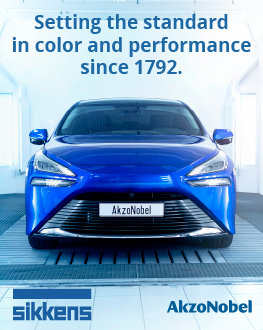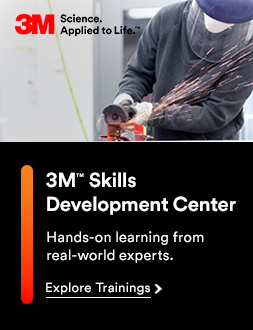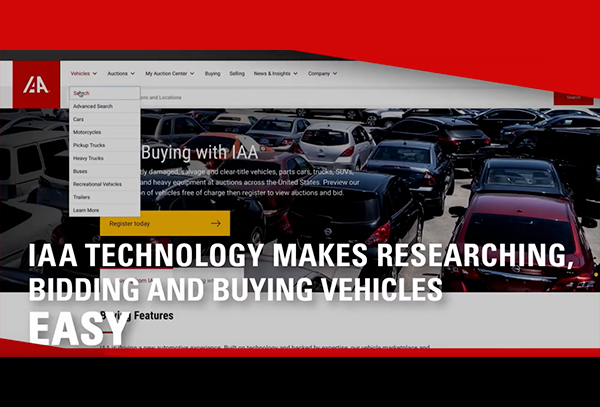PART ONE of what some of Canada’s collision leaders foresee for your future
If you’ve been to any conference, meeting or partook in any industry conversation as of late, you’ll be familiar with the sentiment that the automotive industry has seen more change in the last five years than the previous 20 years combined.
If you’re in tune with the industry in any way, shape or form, you also know that this is just the beginning. Things move fast in the modern world, and collision centres have no choice but to keep up.
In the face of these times, we are launching an exclusive executive opinion series. This is part one of a multi-issue series from Collision Repair magazine, featuring top-performing industry representatives from across North America. Read the first of our expert opinions on the following pages.

CRM: What do you foresee as the top trends this year?
MM: The evolution of the collision centre, OE and insurance company dynamic. Some call it the Bermuda Triangle, I just call it common sense. We have to fix cars properly and according to industry and OE guidelines. The challenge is that those making those guidelines (OEs), aren’t paying the repair bill.
So there is a natural disconnect. Fixing that disconnect is a top priority. Second—insurance companies and their supply chain strategy. Branded centres, dedicated capacity programs and OE certification segmentation are changing the landscape.
Supply and demand. Since the pandemic, we have seen a massive shift towards a material increase in cars to fix and not enough collision centres to fix them. Does that change throughout the year and shift towards fewer cars to fix and no capacity issues? Time will tell.
CRM: What is one thing you would advise collision centres to pay attention to?
MM: Profitability. This is the most important thing for me and our franchisees. Collision centres have to become more profitable. To attract talent, to fix cars right, to invest in equipment, to ensure sustainability of the environment, to grow and to deliver on customer, OE and insurer’s needs. It all depends on our sustained profitability across all stakeholders.
CARSTAR has a 30-year legacy because of our owners and their resilience to endure the countless obstacles that get thrown their way, from; rising cost of materials, overhead, labour; technician shortages; complex manufacturer technology; even pandemics. Our reputation as premier industry-leaders are hard-earned by these remarkable owners.
They know it’s important to pay attention to profitability and they take advantage of every support pillar we have to ultimately build a best-in-class business that our partners can count on to sustain the test of time.

CRM: What do you foresee as the top trends this year?
MG: As we navigate through 2024, the need to address the nationwide shortage of repair capacity is a pivotal trend shaping our industry. This challenge affects all industry stakeholders but places most of the burden to find solutions on repairers. A long-term solution involves repairers making significant capital investment in both human resources and business expansion with no guaranteed return; repair businesses are footing the bill and taking all the risk.
From our vantage point of decades spent analyzing collision metrics, AutoHouse suggests instead that repairers look first at optimizing existing capacity. Once you’ve gained all the efficiency that can be squeezed out of your current resources, decisions around expansion may be very different, or at minimum, thoroughly evaluated. Before making any substantial financial commitments, it is crucial to assess and optimize current operations. In our experience, maximizing efficiency requires being smart as well as busy. Many repairers have successfully increased their monthly repair volume and profitability without additional resources by anchoring their operations to some key metrics. If enhancing your repair count by 10-20 units a month could influence your strategic decisions, it’s time to take a closer look at some numbers.
Improving operational efficiency benefits everyone; it eases the industry’s capacity constraints by boosting a repairer’s throughput and increasing their profits. After that, contemplating investment in the next phase of business growth might seem a lot more straightforward. Below are some key metric comparisons provided by your colleagues at AutoHouse and please always reach out at www.autohousetechnologies.com with any questions.
CRM: What is one thing you would advise collision centres to pay attention to?
MG: Touch time is the overarching measure of efficiency but the three foundational metrics below drive successful operations.
1) Daily Output is the average hours produced/day (e.g. 100 hrs/ day averaged over 60 production days). Ideally, daily output will be consistent.
2) WIP Ratio is Current Hours onsite/Daily Output (e.g. 11.0:1). This equates to having 11 days of inventory on site or just over 1,100 Hrs in WIP. Faster inventory turnover equals more profit; just ask Walmart.
3) Performance by Repair Segment is Touch Time by Repair Size (hours are categorized into Xpress, Light, Medium and Heavy). Most repairers can significantly improve performance by processing smaller repairs more efficiently and using repair size to determine scheduling and workflow.

CRM: What do you foresee as the top trends this year?
PP: Firstly, labour shortage. Repairers are still attempting to overcome service delays which are caused by increases in work, but not enough staff to support operations. Many organizations in the collision repair space, inclusive of Simplicity are taking matters into their own hands and making our workforce sustainability a strategic imperative. Organizations who are investing, committing resources to recruitment of top talent and emerging talent, are derisking their business for future success.
Capacity is still one of the largest challenges facing the collision repair space. It impacts customers negatively, puts downward pressure on collision centre margins and drives up costs for our B2B work providers. Although capacity is strongly linked to the talent shortage, I believe collision repairers will continue to revisit their operational model. Collision repairers will need to demonstrate our ingenuity, as we’ve done many times in the past and work on concepts just as Just-in-Time (JIT) inventory of vehicles and revisit processes to determine where is waste that can be removed in ordered to enhance capacity for your customers.
Finally, I believe we need to pay attention to the proliferation of environmental sustainability in the collision repair space. Although Simplicity is the pioneer in environmental sustainability, other members of the collision repair community are making their first steps into their net zero journey. This is exceptionally encouraging. I believe that not only work providers, but the end user wants to deal with an organization that considers all stakeholders, inclusive of their community. This will develop tremendous equity in the communities served.
CRM: What is one thing you would advise collision centres to pay attention to?
PP: One thing collision repairers should focus on—profitability. Without it, we can’t exist. Collision repairers should visit their revenue and costs and set a one percent target/month. How do I increase my revenues by one percent per month, and how do I reduce my cost of goods sold (COGS) and operating expenses by on percent per month? This will drive substantial results and pave the way for further sustainability in our industry.








































2 Responses
Fantastic article!
Interesting segment, looking forward to further contributions. Some good points made here